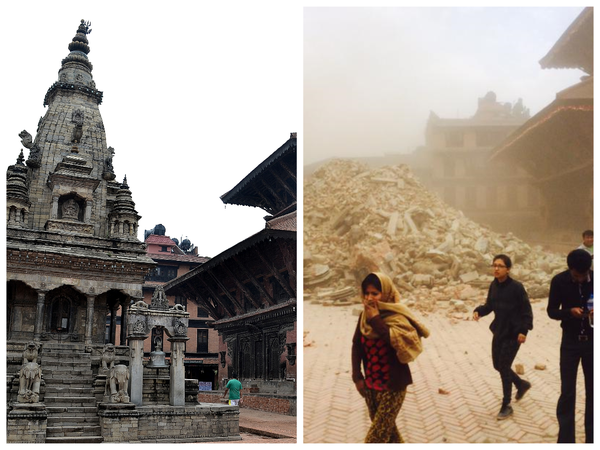
Ten years ago, Nepal shook. On April 25, 2015, a 7.8-magnitude earthquake tore through this Himalayan nation, followed by a second 7.3-magnitude punch on May 12. Nearly 9,000 lives were lost, over 22,000 people injured, and millions left homeless. I remember it … Durbar Square in Kathmandu crumbling, Patan’s temples leaning, Bhaktapur’s streets choked with dust.
Over the years, I’ve written about the destruction, the aftershocks, and the slow, uneven recovery. Now, in 2025, marking this decade milestone, I’m back to take stock. The story’s evolved—some cities have risen from the rubble, others limp along, and the massive donations that poured in? Well, that’s a tale of generosity shadowed by a frustrating lack of clarity.

The Global Cash Flood
When the first earthquake hit, the world didn’t hesitate. Money flowed in like a monsoon river – governments, NGOs, and ordinary folks dug deep. The figure that sticks out is $4.1 billion, pledged by international donors to rebuild Nepal. That’s billion with a “b”, a staggering sum for a country of Nepal’s size. India kicked in billions of rupees, Japan funded heritage projects, and private donors everywhere chipped in. I remember the fundraisers, the hashtags, the gamers at Bungie raising $1 million through Destiny. The United States alone pledged $130 million in humanitarian aid, emergency relief, food, water, and reconstruction support, straight from USAID and the State Department. It was a rare moment of global unity, a lifeline thrown to a poverty led nation on its knees.
But ten years later, I’m walking through the Kathmandu Valley, and the question nags: where did it all go? Bhaktapur’s temples gleam again, Patan’s making strides, yet Bungamati’s still half-built, and parts of Kathmandu feel stuck in 2015 yet there are big electric cars zipping around and high fashion on parade. Again, That $4 billion—and the U.S.’s $130 million slice was meant to rebuild homes, schools, and heritage—8,000 schools, 600,000 houses, countless temples. So why am I still seeing tarps and scaffolds in places that should be whole?
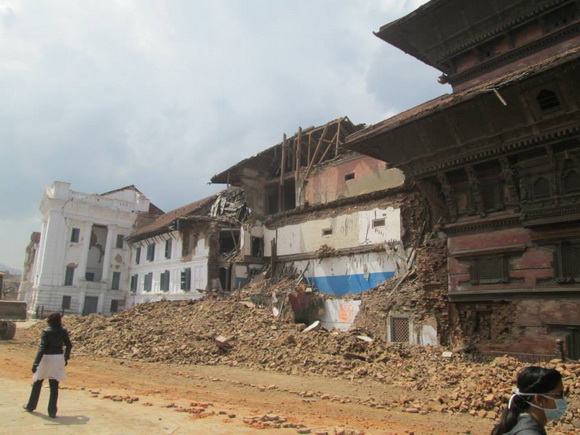
The Transparency Black Hole
I’ve always been wary of big promises (travel’s taught me to question the machine) and Nepal’s recovery is a textbook case. The government set up the National Reconstruction Authority (NRA) in late 2015 to handle the cash and rebuilding. They pegged the need at $6.7 billion, but only $4.1 billion came through in pledges, and even less hit the ground. The NRA’s own stats show about half that amount spent by 2025, with many projects incomplete or stalled. A 2018 Kathmandu Post probe found just 60% of pledged funds disbursed by 2017, and tracing it to actual outcomes? Good luck.
Bureaucracy’s a big culprit. Political gridlock delayed the NRA’s start by months, and when it got rolling, funds trickled out slowly, caught in red tape, local corruption, or plain inefficiency. NGOs flooded in too, some doing solid work, others less so. I’ve seen shoddy shelters from “aid tourists” collapse in monsoons, and heard whispers of overhead costs swallowing millions. The $4 billion was lifesaver, literally, but it created a mess of accountability issues. Donors deserve a clear account, where’s the transparency?

Cities in Progress and Stagnation
In general: Bhaktapur’s the standout. Its Durbar Square temples are fully restored, a phoenix from the ashes. This city’s unique: it used entry fees, local donations, and even contributions from folks like me at The Longest Way Home to rebuild. Every brick’s accounted for, you could sponsor a temple, get a receipt, see your name on a plaque. It was transparent, community-driven, and done. Nyatapola Temple towers again, Vatsala Durga’s back, and the 55 Window Palace shines. Bhaktapur’s the only place in Nepal that’s nailed reconstruction. Check my Bhaktapur Durbar Square guide to see for yourself.

Patan’s close behind. Its heritage—think Krishna Mandir, the Golden Temple, has largely recovered, though regular repairs keep coming with the help of the Kathmandu Valley Preservation Trust (private). Patan Durbar Square’s not the ruin it was in 2015; again the Kathmandu Valley Preservation Trust (KVPT) and local artisans have brought back its intricate beauty. It’s not perfect as scaffolding still dot the skyline. But it’s standing, tourists and worshippers still flow. My Patan Durbar Square guide shows you this.
Bungamati’s a different story. This ancient Newar town was flattened in 2015 with 851 homes gone, temples like Manakamana reduced to rubble. Today, it’s about 75% rebuilt. I visited last month; the streets are coming back, but progress feels sluggish. Families still lean on temporary fixes, and that $4 billion … I’m not sure anyone here believes it was real. The NRA claims 80% of private homes across Nepal are rebuilt, but in places like Bungamati, the $3,000 grants barely cover materials, let alone builders.
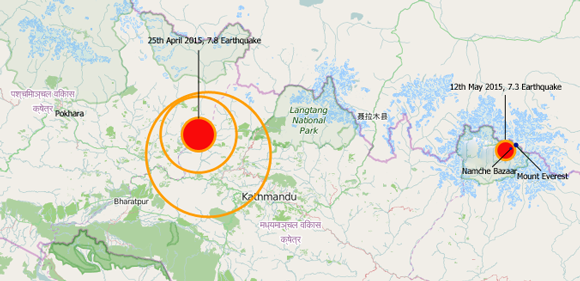
Kathmandu’s a mixed bag. Durbar Square’s mostly repaired with Kasthamandap, from the 12th-century, reopened in 2022, and Trailokya Mohan Narayan’s back as of 2024. But Hanuman Dhoka, the inner palace, is still a mess. Scaffolding is a constant reminder. The square’s living heritage (people) hide the cracks, literally and figuratively. See my Kathmandu Durbar Square guide for the latest. Rural villages like Sindhupalchok, where 90% of homes collapsed, still have families in tin shacks. Schools in Makwanpur? Kids study in large tents. That $4 billion rebuilt a lot, but not enough it seems.

Myanmar 2025: A Mirror and a Warning to Nepal
Now, let’s look at Myanmar. The irony and tragedy was not lost on me. On March 28, 2025, a 7.7-magnitude quake hit near Mandalay with 3,354 dead, 4,850 injured, 220 missing, per state media. Like Nepal, aid rolled in: China’s $13.9 million, Taiwan’s $50,000 and teams, the IRC and Direct Relief with tents and medical aid. But the U.S.? Just $2 million. Compare that to the $130 million the USA donated to Nepal in 2015. Why? Myanmar’s junta, entrenched since the 2021 coup, is not liked. Western aid is being questioned by the donors themselves. The USA has seen the gutting by Trump-era cuts to USAID. A lesson from the 4 billion Nepal once received internationally? Or, simply politics.
Myanmar’s quake exposes today’s global aid fault lines. Nepal’s $130 million from the USA was part of a $4 billion package when globalization was a priority, pre-Trump, pre-COVID, when Western generosity peaked. Myanmar’s donation from the USA is telling. Politics overrides aid.
A Personal Journey Through the Rubble
The 2015 earthquake didn’t just shake Nepal—it shook me. Back in 2014, I was wrestling with a decision: should I document Nepal’s heritage? I’d dreamed of creating a guidebook, a detailed record of its temples, palaces, and streets. But I hesitated, would it be too much when “systems” like government archives already existed? The earthquake answered that. When those systems failed. When centuries-old buildings vanished with no proper blueprints to rebuild them, I knew I’d been right to doubt. I was standing behind Vatsala Durga when I was thinking about it all per-earthquake. My instinct to document Nepal’s heritage wasn’t just valid; it was urgent. I wrote about it then, check my early articles like this one and this one. I teamed up with the Digital Archaeology Institute to 3D-map Nepal’s temples, a painstaking process to capture every temple. It was struggle that didn’t make technical sense. I reached out to software companies and they were eager to help with full 3D mapping. That sparked the Digital Archaeology Foundation, my effort to preserve these structures digitally for future generations was happening.
Maybe the most direct outcome was Kathmandu Valley Heritage Walks. I poured myself into it—28 original walks through the valley’s heritage sites, crafted for history lovers and anyone who cares about what Nepal was and is. It’s a snapshot in time, documenting temples, palaces, and streets as they stood when I wrote it. The paperback’s a marker on a historic roadmap; the digital edition tracks reconstruction live. It’s one of my proudest achievements. I hope it’s a tool for future generations, a window into what was, and a plea to keep heritage stay alive.
The quake’s chaos also allowed me to thing about MissingTrekker.com too. Seeing no system to help families find lost trekkers was in place, I built it. It’s the only place where loved ones can post about missing trekkers in Nepal, a small but vital lifeline. And when big corporate guidebook publishers stalled, I didn’t. I kept updating photos of temples still standing. I showed the reality on the ground for tourists. When big media announced Patan was gone, I stood there, camera in hand, proving it wasn’t, it happened in this post. It still stood, and people could visit. I’ll shout my own corner here as few others did.

But there’s hindsight too. In 2015, I listed legitimate donation sites from government-run, approved NGOs like these. Then I watched, boots on the ground, as cash didn’t appear from them. Aid groups seemed to purchase new computers and over priced USB sticks while people slept in the open. Big media lapped it up; I saw the frustration and reality on the groun and here’s my take a year later. Worse than this morally were when the bad actors sprang up with fake donation sites, GoFundMes with sob stories with numbers that didn’t add up. Not all were bad, some were simply desperate. However, the scams stuck with me … people cashing in on death and destruction for fancy cars or upgraded homes.
What would I have done differently in hindsight? Trust that I am a trusted authority on Nepal. I’d skip the middlemen and big agencies. I knew the hands-on people buying food, tents, and construction material, taking it straight to villages. Moreover, I knew the people bringing medical aid to schools that were receiving nothing from the big agencies. As a trusted voice on Nepal, I should’ve asked for direct donations, bypassing the large aid agencies and fraudsters. I would have been transparent in showing where the money was going. I did think about it then, but I trusted governments and big agencies to do right in such an emergency. All this while dealing with my own grief: lost friends, familiar places gone. It was a lot. In hindsight, I could’ve gone a different route instead of documenting so much and calling out big media for their inaccuracies I could have directly asked for donations to help specific places and people with full transparency. Lesson learned.
Nepal’s Future: India, China, and the next earthquake nobody wants to talk about
Ten years on, Bhaktapur’s triumph shows what’s possible with community involvement. Patan’s progress is slow but getting there. Bungamati’s crawl is painful. Nuwakot is a constuction site with Chinese builders lacking asides from promises. And, Kathmandu’s patchwork reconstruction reflects only so much. But if, when, another earthquake hits, Nepal will get the same aid. Nobody wants to talk about it. Almost as if speaking about another earthquake is taboo. Myanmar was barely mentioned in the media. Too close for comfort perhaps. Trump’s policies are gutting USA aid capacity and Myanmar’s $2 million proves this. The world has entered a new era. Nepal is at the mercy of India and China is a the cold stark reality.
Indeed, India and China, will likely step up. In 2015, India sent billions in rupees, China funded roads and schools. Today, their rivalry’s economic and militarily led with border disputes, There are Belt and Road ambitions from China and India wants the breaks on. However, there’s no Western buffer to cool these tensions. If / when gets hit by another earthquake, aid will come, but it’ll be a geopolitical chess move. Checkmate is something that will throw the axis of power in south Asia in a new direction that will impact everyone in the world.
Bhaktapur is a shining light in what local efforts, transparent cash, and real results can deliver. Donors in the future need to ask questions, and demand proof before, during and after donations are handed out. Me? I’ll keep going. Heritage is not a big earner. It’s a passion project. I do it in the hope that future generations will have a historical record of what once was. And what can be again should something come to take it all away.
Kathmandu Valley Heritage Walks can be yours to own
This book has been written by a heritage enthusiast, tested by other heritage walkers LIVE on the streets of Kathmandu with the very latest updates and is now available to everyone worldwide.
If you are going to Nepal and enjoy heritage and discovering new places not mentioned anywhere else then this is the best guidebook you can have.
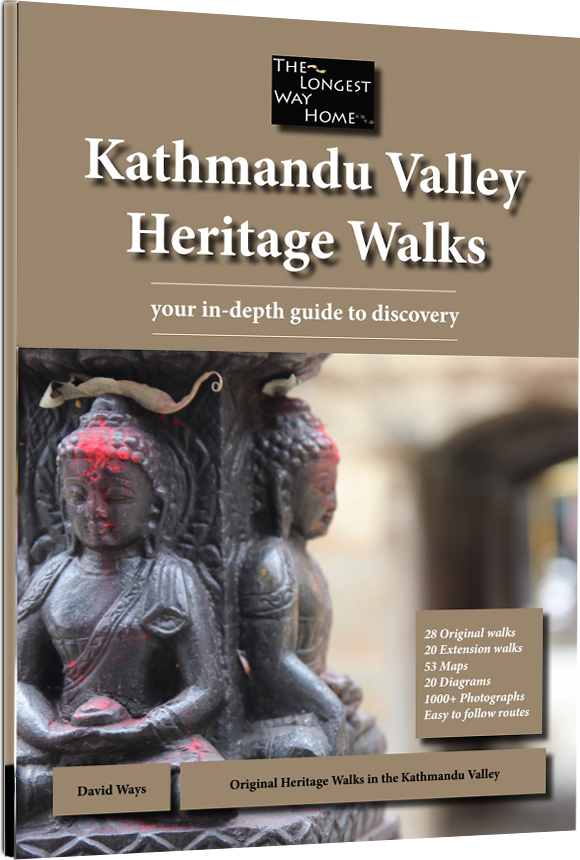
More details on the Kathmandu Valley Heritage Walks guidebook
Or
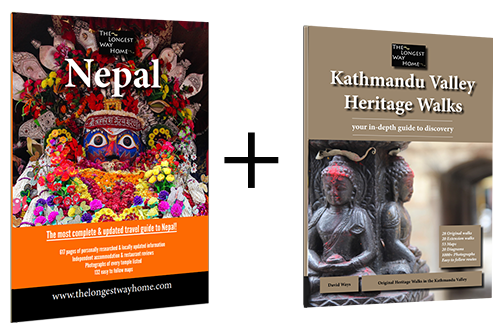
You can get 50% off my Nepal guidebook by getting it with the Kathmandu Valley Heritage Walk book
